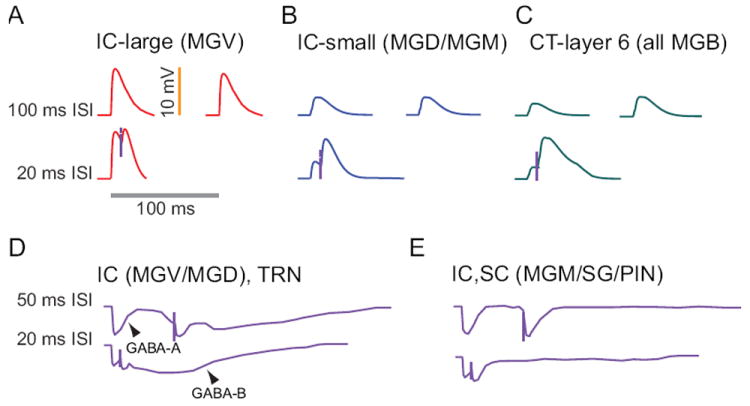Figure 7. Excitatory and inhibitory postsynaptic potentials (EPSPs and IPSPs) in MGB neurons.

Top row, 100 ms interstimulus interval (ISI): Intracellular recordings of synaptic potentials evoked by sound or electrical stimulation of IC axons show that about half of MGV neurons produce large EPSPs (A). For 100 ms ISI, there is little difference between the first and second EPSPs. Small excitatory IC responses (B) are evoked in nearly all MGD neurons and about half of MGV neurons. Corticothalamic responses are similar throughout MGB, consisting of quite small EPSPs. Even for 100 ms ISI, corticothalamic responses (C) produce significant facilitation of their responses. Second row, 20 ms ISI. For briefer ISI, MGV neurons receiving large IC inputs (A) exhibit strong synaptic depression that limits the amount of depolarization produced by the second EPSP. By contrast, MGD and MGV neurons that receive small terminal IC input produce synaptic facilitation for short ISI (B). Corticothalamic inputs (C) demonstrate strong synaptic facilitation and show an enhanced NMDA component, especially for repetitive stimulation. Third row, 50 ms ISI: Inhibition from IC or TRN produces very similar IPSPs in MGV and MGD neurons (D). in MGV and MGD and IC and SC inhibition in MGM/SG/PIN (E) Electrical stimulation of their axons produces a short-latency GABAA receptor mediated response and a long-latency, metabotropic GABAB receptor mediated response that lasts for 200-400 ms. For 50 ms ISI, there is little depression of the GABAA response, and the GABAB hyperpolarization is just beginning when the second response is evoked. MGM neurons receive inhibitory inputs from IC and the superior colliculus. They differ from inputs to MGV and MGD in that there is no clear GABAB response (E). Bottom row, 20 ms ISI: For shorter ISI in MGV and MGD neurons, the GABAA induced hyperpolarization is slightly larger for the second pulse, indicating little or no depression of the early inhibitory response (D). The GABAB responses merge to produce a larger hyperpolarization than the GABAB IPSPs evoked by single stimuli. MGM responses are similar but lack the GABAB response (E).
